Part 2 of a two-part blog series. Read Part 1 here.
New Zealand is reimagining what tourism can look like. The COVID-19 pandemic has provided a unique opportunity to not only build back tourism in New Zealand – but to ‘build back better’.
5. Tourism Funding: the right resources driving the right outcomes
6. Value Add: the ‘halo’ effect and driving productivity, innovation
7. Measure What Matters: Quality over Quantity
8. For New Zealand: industry Structures that represent all stakeholders.
5. Tourism Funding
Successful, sustainable tourism industries understand the full costs and benefits of tourism and have efficient ways to generate revenue to pay for its marketing and management. New Zealand has a highly centralized revenue system which is neither responsive to the growth of tourism nor the needs of local communities. Prior to the COVID-19, Auckland implemented a controversial hotel rate and Queenstown pushed forward with a bed tax without a coherent national strategy on how to raise and share revenue from visitors. New Zealand urgently needs a fresh approach starting with a review of international best practices on tourism funding mechanisms. There are decades of experience from hundreds of destinations on the pros and cons of different funding approaches including bed taxes, visitor levies, tourism improvement districts, tax increment financing and more.
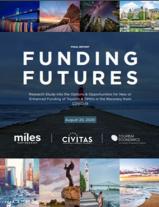 As a starting point, Miles Partnership recently facilitated a major review of tourism funding models during and post COVID-19: “Funding for Tomorrow”. Along with Civitas and Tourism Economics, we completed “Funding Futures” research project for North America working with multiple agency partners including Destination Analysts, U.S. Travel Association’s Destination Council, Destination International and the Destination Marketing Association of Canada. The project was coordinated in parallel with the European project, “Tourism Taxes by Design,” led by Group NAO and the Global Destination Sustainability Movement with support from the European Tourism Association. The two projects assess the impact of the COVID-19 crisis on tourism tax and revenue streams and identify 10 new or enhanced funding options to be “built back better.” This includes innovative ideas such as new types of dedicated tourism funding mechanisms and regenerative tourism funding (see #4) that encourages certain types of tourism and disincentivize other types.
As a starting point, Miles Partnership recently facilitated a major review of tourism funding models during and post COVID-19: “Funding for Tomorrow”. Along with Civitas and Tourism Economics, we completed “Funding Futures” research project for North America working with multiple agency partners including Destination Analysts, U.S. Travel Association’s Destination Council, Destination International and the Destination Marketing Association of Canada. The project was coordinated in parallel with the European project, “Tourism Taxes by Design,” led by Group NAO and the Global Destination Sustainability Movement with support from the European Tourism Association. The two projects assess the impact of the COVID-19 crisis on tourism tax and revenue streams and identify 10 new or enhanced funding options to be “built back better.” This includes innovative ideas such as new types of dedicated tourism funding mechanisms and regenerative tourism funding (see #4) that encourages certain types of tourism and disincentivize other types.
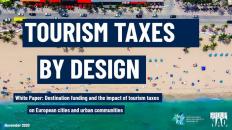 Amongst ideas for regenerative tourism is the idea of “Net Zero to New Zealand” (NZ2) – the author’s concept for a carbon offset scheme for all international air travellers to New Zealand that could generate a strong, sustained source of funding for “regenerative tourism” and also tackle “Flight Shaming” head on.
Amongst ideas for regenerative tourism is the idea of “Net Zero to New Zealand” (NZ2) – the author’s concept for a carbon offset scheme for all international air travellers to New Zealand that could generate a strong, sustained source of funding for “regenerative tourism” and also tackle “Flight Shaming” head on.
Action. New Zealand urgently needs to assess a funding mix that is resilient, sustainable and responsive. A future-focused revenue framework that generates appropriate levels of revenue to both market and manage tourism and reinvest in local communities and the natural environment. New Zealand should urgently undertake a global review of tourism taxation and funding to develop a national strategy on tourism revenue.
Resources:
- 10 international best practices in tourism funding we identified in the combined North American and European Funding studies – ‘Funding for Tomorrow’
- See the ‘Funding Futures’ North American research report & webinars on tourism & DMO funding.
- Watch/register for the ‘Funding Future’ webinar series including the Trans-Atlantic Webinar on insights from the two major tourism funding studies and a panel of North American and European DMO leaders discussing the implications and priorities
- Net Zero to New Zealand – Carbon Off Set/Regenerative Tourism Program for Aotearoa
6. Value Add
Up until 2020, New Zealand tourism was seen by many as a low wage, poorer value part of the economy, adding to the nation’s productivity challenges. In New Zealand’s recovery from the COVID-19 crisis, we need to redouble our efforts to build an industry sector that generates strong returns to business and our national current account including well-paying jobs. One example of lost productivity: New Zealand’s hospitality sector pays an estimated quarter of a billion dollars per year to the duopoly of Expedia and Booking.com, two online travel agencies (OTAs) that dominant an estimated 80% of online bookings in New Zealand. We have also failed to invest in a coordinated industry technology strategy or shared technology solutions such as Australia and the UK’s successful Tourism Exchange platforms, Tourism Exchange Australia (TXA) & Tourism Exchange GB, which quickly and easily connect all types of tourism suppliers, especially SMEs, to a wide range of distributors around the world (see below).
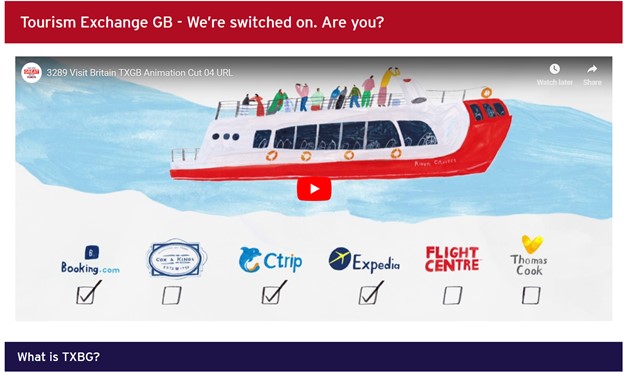
Tourism Exchange GB copied Tourism Exchange Australia (TXA) – which was recently identified by McKinsey & Co* as one of the most impactful technology solutions to boost productivity amongst tourism SMEs – especially coming out of the crisis.
Action. New Zealand tourism needs a clearer national strategy and deeper investment in building productivity – from workers to how businesses deploy new technology. Greater investment in worker training, skills & career development, needs to be matched by a relentless focus on solving the problems of seasonality and dispersal. This starts with the foundation of domestic tourism (see #1 in Part 1 of this blog). Like nations such as Ireland, we should seek to build world class digital marketing skills and a robust ‘Travel Tech’ sector – investing in new technology and new media solutions that can boost New Zealand tourism and be exported internationally.
Resources:
- See my two part blog: ‘OTAs – their Rewards & Risks’ for an assessment of their impact on hospitality and tourism.
- See Tourism Exchange Australia (TXA): https://www.txa.com.au & UK’s Tourism Exchange GB: https://trade.visitbritain.com/txgb
- See the ‘Capacity & Capability’ section of Miles’ Global Benchmarking study on Domestic Tourism. See my summary of the study here or download the Executive Summary
- See Ireland’s thriving ‘Travel Tech’ Sector: “Irish Travel Tech Companies Thriving says New Report” Irish Times, February 2020
- McKinsey & Co ‘Reimagining the $9 Trillion Tourism Economy – What will it Take?”
7. Measure What Matters
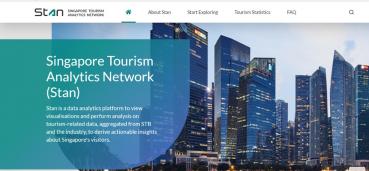 To manage a world class tourism industry, New Zealand needs a world class measurement and reporting framework. As of 2020, we have a lot of work to do. Decades of failing to prioritise or adequately measure domestic tourism remains a problem as do very poor levels of research and analytics skills amongst tourism businesses. This includes widely varying capabilities amongst RTOs and government entities. New Zealand’s capabilities pale in comparison with world leaders such as Singapore and their impressive Singapore Tourism Analytics Network (STAN) which provides their industry with constantly updated & powerfully visualised insights including visitor arrival statistics, passenger profiling, spending data, revenue data, and in-depth customer-experience surveys.
To manage a world class tourism industry, New Zealand needs a world class measurement and reporting framework. As of 2020, we have a lot of work to do. Decades of failing to prioritise or adequately measure domestic tourism remains a problem as do very poor levels of research and analytics skills amongst tourism businesses. This includes widely varying capabilities amongst RTOs and government entities. New Zealand’s capabilities pale in comparison with world leaders such as Singapore and their impressive Singapore Tourism Analytics Network (STAN) which provides their industry with constantly updated & powerfully visualised insights including visitor arrival statistics, passenger profiling, spending data, revenue data, and in-depth customer-experience surveys.
Action. We need to start with a clear sense of our renewed, refocused priorities and objectives for New Zealand tourism in the decade(s) ahead. Clear, nationally coordinated but localised tourism marketing and management objectives that are specific and measurable. New Zealand then needs to build a measurement, and reporting framework to measure and report on our progress – including greater research and analytics capabilities at business, DMOs (RTOs & Tourism New Zealand) and government. This needs to include regional ‘Mood of the Nation’ research of resident sentiment that is consistent and comparable – as is undertaken in Iceland. We also need to leverage new data sources and new analytics platforms more quickly and efficiently – using our small size as an advantage in sharing data to the benefit of all and in quickly testing new approaches and technologies.
Resources:
- Singapore Tourism Analytics Network (STAN): https://stan.stb.gov.sg/portal
- Iceland Tourist Board (FERDAMALASTOFA) Research & Publications
8. For New Zealand
Finally, we end close to where we began. New Zealand needs industry and government structures that clearly hear the voices of our industry, our communities – as well as our visitors. For example, we have much to learn from our primary sector where ‘grass roots’ farmer involvement is strong and participatory. Primary sectors such as Kiwifruit have been particularly impressive in how they have organised and collaborated – supporting research, constantly innovating and in their strong response to their own pandemic – the arrival of the bacterial disease Psa in 2010.
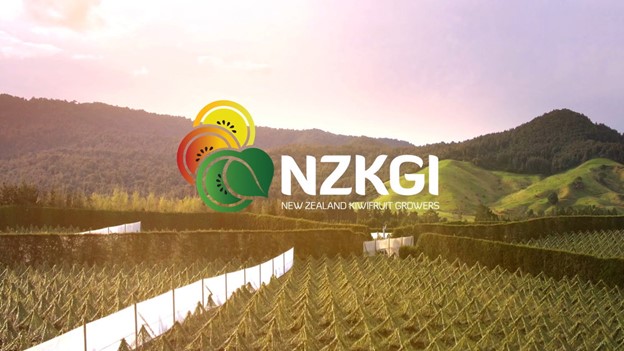
New Zealand Kiwifruit Growers dealt with their own pandemic in 2010 – a serious breach of New Zealand’s biosecurity with the arrival of the bacterial disease Psa impacting Kiwifruit vines around the country. 10 years later Kiwifruit growers are enjoying record export returns driven by new products, new markets and a global leading brand.
Action. As flagged in the second of our eight points in this blog series, New Zealand needs Destination Management plans must reflect genuine and ongoing resident involvement. This includes ensuring RTOs and local government are both measuring and are more responsive to the view of local residents. It also includes reviewing and updating TIA so its role, responsibilities, events, revenue streams and voting structure are more fully representative of the industry – an industry dominated by Small to Medium Enterprises.
Going back to ‘business as usual’ should not be an option for New Zealand tourism. We can do better – much better. Post COVID-19 New Zealand needs a tourism industry that is better balanced, more widely shared and value focused – with a lighter footprint and softer touch. This is the ‘New New Zealand’ tourism industry – let’s get started.
- Read Part 1 of this Blog here
